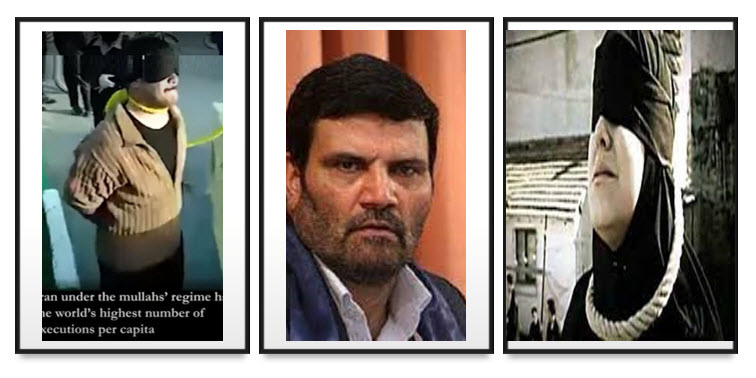
Salavati, like the regime’s current president Ebrahim Raisi, is infamous for his decisions as a prosecutor in the 1988 massacre in which the regime killed more than 30,000 political prisoners, and he, like all regime officials, lives a dismal life full of crime and killings.
Several people who were detained during the Iranian People’s Uprising have had their cases forwarded to Judge Salvati, also known as the Judge of Death, according to a report last week. Following that, it was announced that he was putting some of these detainees on trial for ‘moharebeh’ (waging war against God), which could result in their execution.
There is little information about his background. Salvati has two children, a son, and a daughter. Because his daughter lives outside of Iran, he has made numerous trips to England and France. He is always accompanied by seven bodyguards and is known to be armed with two guns. Salavati owns several plots of land in Kermanshah, as well as two houses for his children.
Salavati served in the Basij between 1980 and 1988 during the Iran-Iraq war, where he was injured. He joined the judicial police of Kurdistan province in 1986 before becoming a prosecutor and judge in the city of Sanandaj in 1991, despite the fact that there is no proof of his education, let alone a law degree.
His wife, Parvin Shiri of Kermanshah, has spent the last nine years in a mental hospital. She retired from the university where she worked at the age of 40 due to mental illness. The psychological stress caused by her husband’s announcement of the executions has been blamed for Parvin Shiri’s illness.

Salavati began her career as a judge in Islamabad West. He then went to Kermanshah and lived in the confiscated house of General Hossein Hamedanian for a while before being transferred to Hamedan after being promoted for his blatant executions in West Islamabad.
Salavati’s verdicts include the following:
- Ruhollah Zam was sentenced to death on all 17 counts.
- In 2014, Narges Mohammadi was sentenced to ten years in prison. After about eight years, she was released.
- On the charge of differing interpretations of the Quran, Mohsen Amir Aslani was sentenced by Salavati and executed on September 24, 2014, in Karaj’s Rajaei Shahr prison.
- Salavati accused Zahra Bahrami, an Iranian-Dutch citizen arrested during the Ashura protests in 2008, of drug trafficking and sentenced her to death on January 22, 2011.
- In May 2013, Salavati sentenced Omid Kokabi to ten years in prison for cooperating with a hostile country. Kokabi was an elite atomic physics student in America who finished 29th on Iran’s national entrance exam. According to reports, the main reason for his conviction was that Kokabi had refused to cooperate with the regime’s military universities.
- The defendants in the case of Environmental Activists were not permitted to appoint a lawyer.

Salavati accused Zahra Bahrami, an Iranian-Dutch citizen arrested during the Ashura protests in 2008, of drug trafficking and sentenced her to death on January 22, 2011.
MEK Iran (follow us on Twitter and Facebook), Maryam Rajavi’s on her site, Twitter & Facebook, NCRI (Twitter & Facebook), and People’s Mojahedin Organization of Iran – MEK IRAN – YouTub

